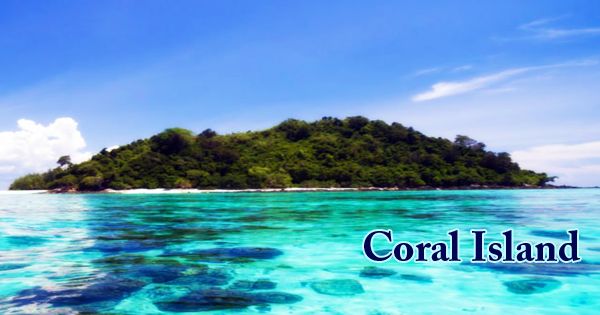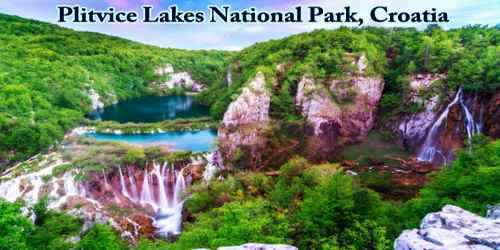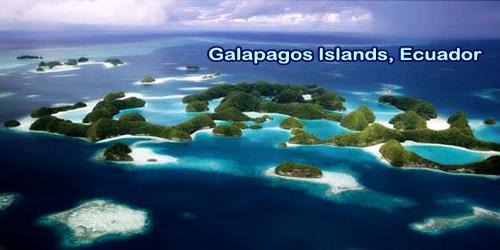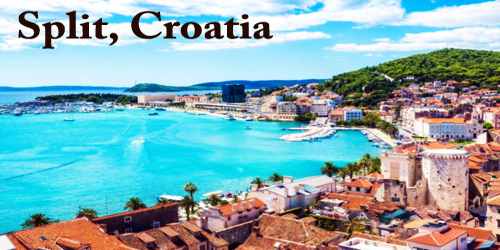A coral island is a type of island made of coral detritus and organic matter associated with it. Coral islands are lowland, maybe just a few meters above sea level, usually with coconut palms and surrounded by beaches of white coral sand. They can reach hundreds of kilometers and cover almost every tropical calcareous island whose construction forms part of a living or relatively new coral reef. Some of the oldest habitats on the earth are coral reefs. The formation of huge reefs made of limestone over geological time.
Reef construction takes place mainly below the high-tide level, and the relatively flat top of the entire reef structure is typically surmounted by a typical coral island or cay. For various aspects, some of which include structure, ecology, and nutrient cycles that all sustain biodiversity in the reefs, coral reefs are essential for life. The island is geologically just one tiny portion of the entire coral reef.
The reefs produce large calcareous skeletons that serve as homes for animals from fish hidden within the reef crooks and crannies and barnacles attaching themselves directly to the structure of the coral. A flat reef area directly skirting a non-reef island, often volcanic, or a mainland mass consists of fringing reefs. The construction of the reef also helps with plants that require photosynthesis by the sun; by raising the plants to the surface of the ocean where the water can be penetrated by sunlight.
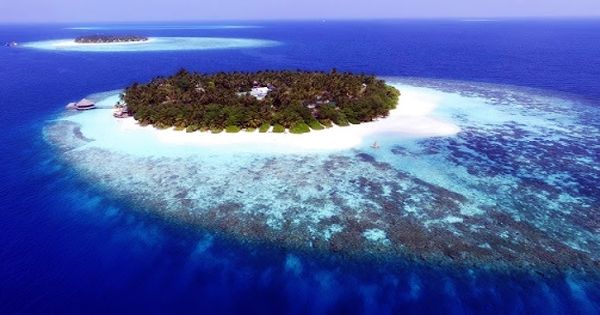
(View of Coral Island)
Barrier reefs are often similar to a non-reef landmass but lie several kilometers offshore, often about 50 m (160 ft) deep, isolated from the landmass by a lagoon or channel. A calm zone in the ocean is also created by the structure of the reef, offering a perfect place for fish and plant species to flourish. Some barrier-reefs are more or less circular, covering an island, but larger barrier reefs are complex linear features consisting of chains of coral patches, some of them elongated into ribbon reefs, such as those along the Red Sea coast and the Great Barrier Reef of Australia.
The reefs hit the surface over geological time and can become a coral island, where a whole new world for creatures dependent on land starts. Atolls, which are like circular barrier reefs but without their central landmass, consist of the third group of reefs. Finally, patch reefs, which have irregular table-like or pinnacle features, are accessible. Smaller patches exist within lagoons of atolls. Larger patches in each of the other three reef groups exist as isolated sections of larger developments. They exist entirely separate from other types of reefs often.
In reality, coral islands begin as a volcanic island over a hot spot. On the outskirts of the volcano, a fringing reef forms as the volcano rises from the sea. Reef islands can also occur along the length of the reef, in isolation or in a chain. They often take the form of long land strips covering much of the length of a reef top’s central field. Via a mechanism known as plate tectonics, the volcano gradually moves away from the hot spot. The volcano can no longer keep up with the erosion that takes place because of the ocean and undergoes subsidence as this happens.
There are two entirely distinct forms of reef island origin: uplift and accretion. The coral must continue to grow to survive in the epipelagic zone until the island is submerged (sunlit). This allows the coral, with a shallow lagoon in the center, to develop into an atoll. The lagoon will then undergo accretion and create an island entirely composed of materials of carbonate. In the first one, as a result of crustal movements bringing it above sea level, part or all of a reef system can become land. The previously submarine reef top becomes a low plateau-like feature, and these islands are usually rocky, with cliffs and land surfaces pitted and sculpted by weathering solution (karst). As an interior basin, they are mostly still identifiable as atolls with a lagoon, now much shallower or even entirely dry.
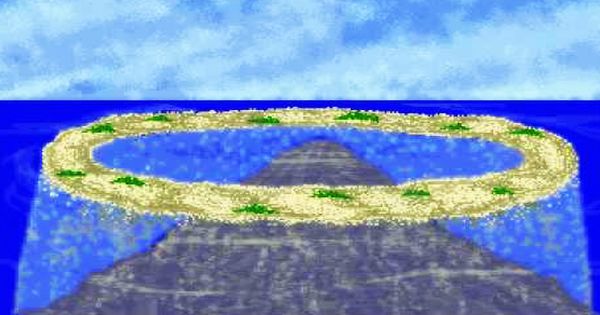
(Formation of Coral Islands)
Numerous anthropogenic impacts are threatening coral reefs, some of which have already had significant effects worldwide. Reefs develop in shallow, warm, nutrient-poor waters where phytoplanktons do not interact with them. Accretion-generated coral islands have formed from rubbly reef rock eroded by storms and waves off the reef and mixed with finer reef detritus. Occasionally, the exceptional conditions of cyclonic storms are necessary in a single event to build reef-top shoals. Coral is composed of carbonate calcium and is dissolved by carbonic acid. With the rise in carbon dioxide from atmospheric combustion reactions by precipitation, carbon dioxide combines with water and forms carbonic acid, increasing the acidity of the ocean, which reduces the growth of corals.
Coral Islands beaches grow around the shoal and the lighter, finer material can be heaped into dunes by wind. Rainwater is now able to enter all this material, which is readily dissolved by it being almost entirely of calcium carbonate, and the dissolved lime is redeposited around the loose material, cementing it together. This was the root of many of the coral islands in the central and southern Pacific and of the Maldive Islands in the Indian Ocean. Human beings can cause major damage to reef environments by chemical and physical changes and slow the formation of coral island chains. Much of the coral islands in the world are in the Pacific Ocean.
Some of the islands belonging to Kiribati are also called islands of coral. Coral islands also form part of the Maldives. St. Martin’s Island is a coral island in Bangladesh, 8 km2 in size. Close Pattaya and Ko Samui, Thailand, coral islands are also found. The reef islands are not very stable especially those close to sea level. They can also be weakened and killed by the cyclones that help to build them. Waves can attack one side and on the other redeposit the material.
Information Sources:
